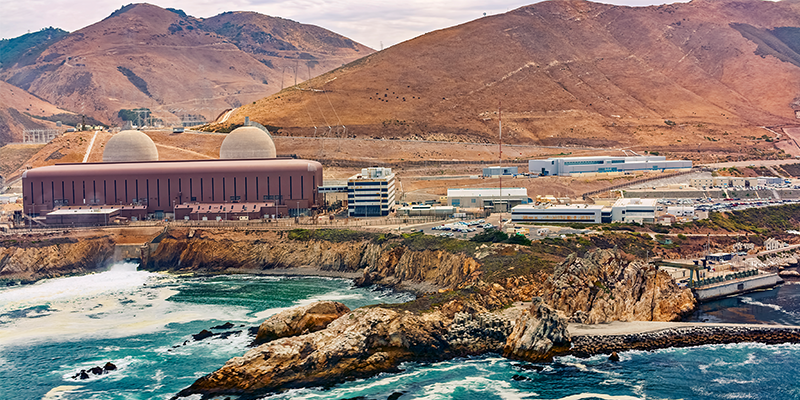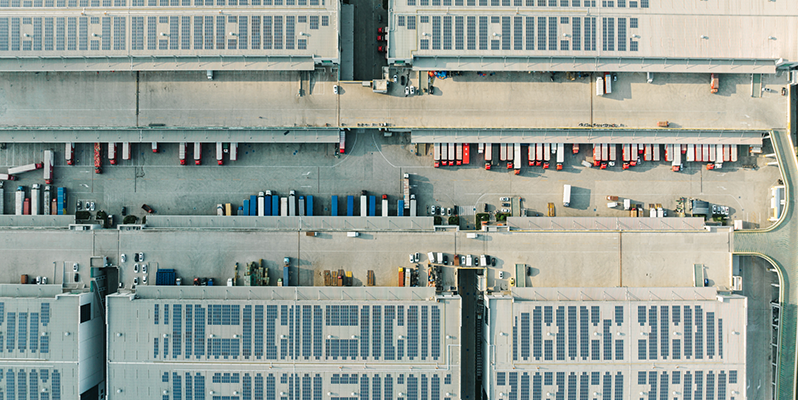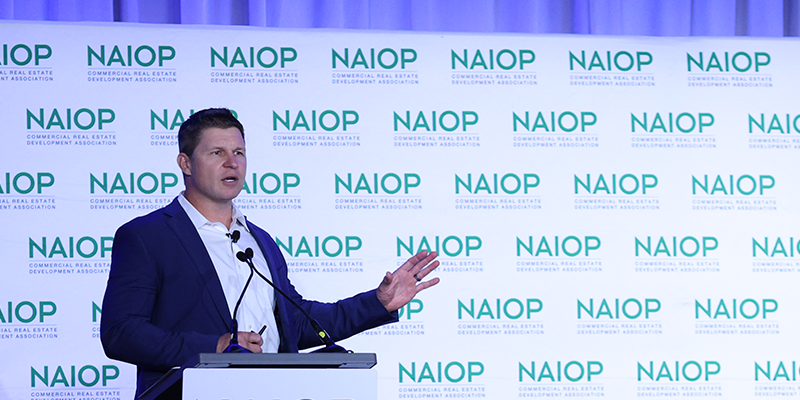By Marie Ruff
“We’re hearing a lot of information about grid congestion and the limits of our current power infrastructure. These issues are materially affecting industrial site selection and development timelines,” said Dan Kennedy, CEO, NAIOP New Jersey, and moderator of a panel discussion during NAIOP’s I.CON East this week in Jersey City, New Jersey.
“The conversations around energy need to be front and center of all of our minds,” Kennedy said. “Whether it’s industrial development, office or mixed-use, energy supply constraints are already influencing the underwriting and feasibility of these large-scale industrial projects like data centers or EV battery plants in the state of New Jersey.”
Joining Kennedy were Erick Ford, vice president, Stevens & Lee Public Affairs; George Green, vice president, ARCO National Construction; Nate Kirschner, senior project manager, land development, Bohler; and Grace Power, general counsel and executive vice president of government affairs, Solar Landscape.
“I’ve been in the energy and utility space for my entire career, and I’ve never seen such focus on energy issues,” said Power. “Rates are going up everywhere; people are paying attention.”
“[Solar Landscape has] an interesting, unique model where we lease rooftops from people like yourselves; we pay you a lease payment just like any other tenant, and put that electricity right onto the grid,” Power said. There are no NIMBY issues when power comes from solar panels on a warehouse rooftop located close to the recipients of the solar power, she added.
“We’ve seen a shift from ‘We want highway access, cheap dirt and flat pieces of land,’ to ‘We need energy, and we don’t care if the land is flat, but we need that power,’” said Kirschner. “It has impacted how we advise our clients, and it’s also impacted where these facilities are going.”
Land used to be top of mind, agreed Green, with the major focus shifting from finding cheap land with easy access to major interstates to securing water, electricity and sewage.
Kennedy asked the panelists which emerging energy technologies show real promise for powering the next wave of not just industrial growth but our society.
“I would say for industrial specifically, solar has a lot of promise,” Kirschner said, “However, it doesn’t appear that solar has caught up with the demands that a data center will actually need to run a facility yet.” He mentioned talk about SMRs – small modular nuclear reactors – but said he understands them to be 7-10 years out. And after hearing opposition to diesel trucks and backup alarms during planning boards and commissions, it would be a hard sell to explain having a nuclear reactor located behind a neighborhood.
“I think it’s the regulatory piece for these other [energy] sources that really needs to catch up or get ahead of the technology,” Kirschner added.
“I think we absolutely need an all-of-the-above energy approach right now. We just do not have enough generation,” Power said. “This is not just an issue for new buildings – this is an issue for literally everyone who is plugged in, which is every one of us in our personal and professional lives.”
“Power prices are going up because generation is in demand, and [at Solar Landscape] we view ourselves as a piece of that puzzle,” she added.
“We all can agree time is money. Everyone in the room likes these [energy] ideas,” Kennedy said. “But you hear a year, three years, five years, 10 years… it becomes like an academic exercise for a project that’s immediately in need. How do we accelerate this access to energy?”
Talking with utility companies is “kind of like dealing with the government, just a bureaucratic, private entity that, if you’re not able to navigate it, sometimes you get stuck,” Ford said. “You have got to really do the homework of finding out who you need to talk with. Most of these companies span multiple states now, so you’d be surprised how someone in New Jersey or Pennsylvania could then make the call, and before you know it, things are able to move a little bit.”
For solar, the longest development piece is dealing with all of the permitting and the local government, not building the actual system, Power said.
“We aspire to have a more sane regulatory system in the future,” Kennedy said. “That’s where NAIOP New Jersey’s focus is: working to fix the broken systems and make it a little bit easier for you all, and cheaper for you all to bring great projects to market that society needs.”

This post is brought to you by JLL, the social media and conference blog sponsor of NAIOP’s I.CON East 2025. Learn more about JLL at www.us.jll.com or www.jll.ca.








